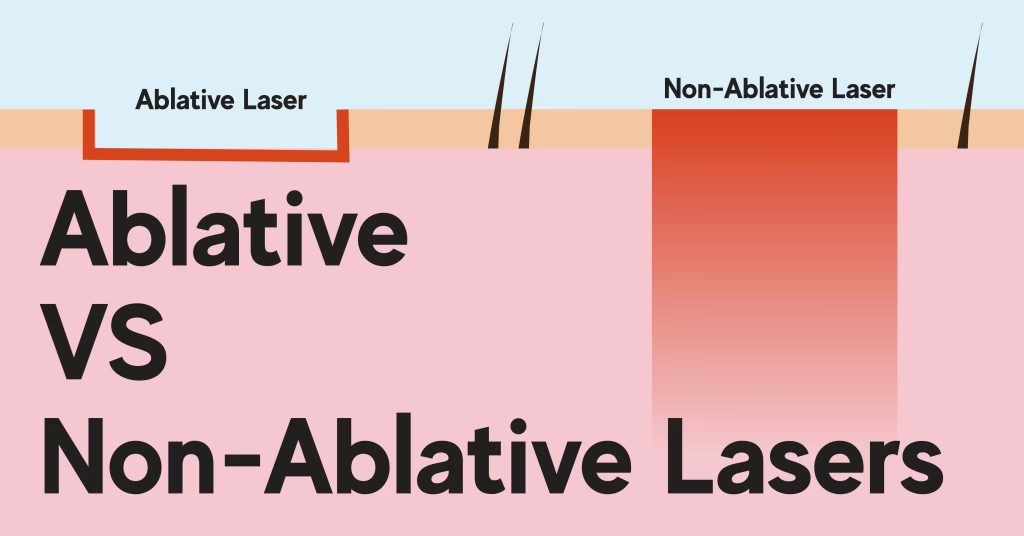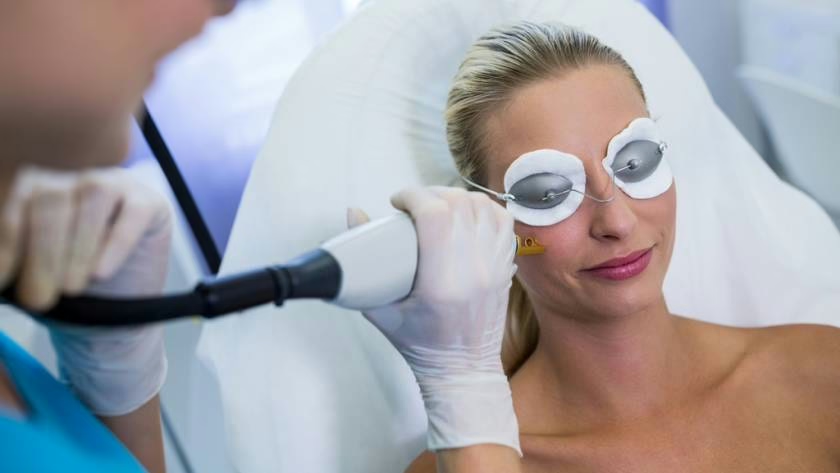The Ultimate Guide to Fractional Laser Therapy: 6 Astonishing Benefits

Table of Contents
Fractional laser therapy has revolutionized dermatology and the aesthetic industry, offering transformative results with reduced downtime. This non-invasive treatment option is increasingly favored by those looking to enhance skin texture, reduce scarring, and rejuvenate their appearance without the intensity of traditional laser resurfacing. Whether you’re interested in reversing sun damage, softening wrinkles, fading acne scars, or achieving a brighter, more even skin tone, fractional laser therapy might be the ideal solution for you. In this comprehensive guide, we’ll explore how the technology works, the different types of lasers available, the conditions it treats, the benefits and risks, what to expect before, during, and after treatment, and how to maximize results for long-term skin health.

What Is Fractional Laser Therapy?
Fractional laser therapy is a cutting-edge, minimally invasive cosmetic procedure that uses focused laser beams to create microscopic injuries in the skin. These tiny controlled injuries—also called microthermal treatment zones—penetrate either the epidermis or the dermis (depending on the laser used) and stimulate the body’s natural healing response. This process leads to increased collagen and elastin production, helping to rebuild and remodel the skin for a healthier, more youthful appearance.
What makes fractional laser unique is its selective approach. Instead of ablating (removing) or heating the entire skin surface, it targets a “fraction” of the skin at a time using thousands of pinpoint laser beams. This allows for quicker healing, minimal damage to surrounding tissue, and a lower risk of complications. Think of it like aerating a lawn—tiny holes are made to stimulate growth without damaging the whole surface.
Fractional lasers can be either ablative (removing tissue) or non-ablative (heating tissue), and both work by promoting cellular turnover and encouraging your skin to repair itself.
Types of Fractional Laser Therapy
There are two primary categories of fractional laser technology: ablative and non-ablative. Each type offers distinct benefits and is suited for different skin types, conditions, and recovery preferences.
1. Ablative Fractional Lasers
Ablative fractional lasers work by vaporizing the outer layers of the skin to remove damaged tissue. This is ideal for more severe skin issues like deep wrinkles, extensive sun damage, and prominent acne scars. Ablative lasers often require more downtime but offer more significant results.
- CO2 Fractional Laser: This is one of the most powerful laser technologies, using carbon dioxide to precisely remove damaged skin layers. It is highly effective for deep wrinkles, textured acne scars, and sagging skin. Recovery may take 7 to 14 days, but the results are dramatic and long-lasting.
- Er:YAG Fractional Laser: A more refined alternative to the CO2 laser, the Erbium:YAG laser offers precision and safety with less downtime. It is especially suitable for lighter resurfacing procedures, fine lines, and mild textural issues. Healing time typically ranges from 3 to 7 days.
2. Non-Ablative Fractional Lasers
Non-ablative fractional lasers work beneath the skin’s surface without disrupting the outermost layer. They stimulate collagen production without the recovery time required by ablative methods. While results may take longer to appear, non-ablative lasers are preferred for people who cannot take extended time off work or social activities.
- Fraxel Dual (1550 nm and 1927 nm wavelengths): The gold standard in non-ablative laser therapy. The 1550 nm wavelength penetrates deeply to improve wrinkles and scars, while the 1927 nm wavelength addresses superficial pigmentation and melasma. Results are seen gradually over 3–6 sessions.
- Palomar Lux1540: An FDA-approved fractional laser that targets sunspots, surgical scars, and stretch marks with high precision and low risk.
- Clear + Brilliant: A gentle, maintenance-friendly option for younger patients or those seeking early preventative care. It’s ideal for refining texture, reducing pore size, and maintaining radiant skin.

Skin Conditions Treated by Fractional Laser Therapy
Fractional laser therapy is incredibly versatile and can improve a wide array of cosmetic skin concerns. Among the most commonly treated conditions are:
- Acne Scars: Particularly effective on atrophic acne scars, such as rolling, ice-pick, and boxcar types. The laser stimulates new collagen growth, softening scar tissue.
- Surgical and Traumatic Scars: Improves both the texture and pigmentation of scars, making them less visible and more even-toned.
- Fine Lines and Wrinkles: Especially effective around the eyes, mouth, and forehead. The treatment plumps the skin and improves elasticity.
- Sun Damage and Photoaging: Reverses years of UV damage by removing sunspots, freckles, and pigmentation irregularities.
- Hyperpigmentation and Melasma: Especially with non-ablative lasers, fractional treatments can help reduce stubborn pigmentation without worsening it.
- Enlarged Pores: Tightens the skin and smooths texture, leading to smaller-looking pores.
- Stretch Marks: Particularly effective on newer, reddish stretch marks but also beneficial for older ones.
- Skin Laxity: Stimulates collagen and elastin for firmer, more lifted skin.
Benefits of Fractional Laser Therapy
Patients turn to fractional laser therapy for a wide range of reasons. The procedure is known to provide noticeable improvements while minimizing recovery time. Here are the top benefits:
1. Highly Customizable Treatments
Laser intensity, depth, and treatment coverage can be adjusted to meet your skin type, tone, and goals. This flexibility makes it suitable for both subtle improvements and more dramatic transformations.
2. Reduced Downtime Compared to Traditional Lasers
Since only a portion of the skin is treated at a time, the healing process is much faster. Most patients resume normal activities within 3–7 days, depending on the laser type.
3. Improved Collagen and Elastin Production
These structural proteins are responsible for skin strength and elasticity. By stimulating their production, fractional lasers help rebuild the skin from within.
4. Natural and Gradual Results
Results develop over several weeks as the skin regenerates. This natural progression avoids the “sudden change” look and allows improvements to blend seamlessly into your overall appearance.
5. Suitable for a Wide Range of Skin Tones
Modern non-ablative fractional lasers are designed with safety protocols to minimize the risk of hyperpigmentation in darker skin types, making the procedure inclusive and accessible.
6. Long-Lasting Results
When combined with proper skincare, sun protection, and maintenance treatments, results can last several years. Unlike fillers or Botox, fractional laser results don’t fade quickly.

What to Expect: The Treatment Process
Understanding each stage of the fractional laser journey helps ensure a smooth experience.
1. Consultation and Skin Assessment
A board-certified dermatologist or qualified laser technician will evaluate your skin, medical history, and desired outcomes. They’ll help you choose the right laser and develop a personalized plan.
2. Preparation and Precautions
- Stop using products containing retinoids, AHAs, or BHAs 7–10 days before treatment.
- Avoid sun exposure for at least 2 weeks.
- If you are prone to cold sores, your provider may prescribe antiviral medication to prevent an outbreak.
- You may be asked to avoid blood-thinning medications and supplements.
3. During the Procedure
- A topical anesthetic is applied to minimize discomfort.
- The provider uses the laser in a grid-like pattern across the skin.
- You may feel warmth or a prickling sensation; ablative treatments may feel more intense.
- Sessions typically last 30–60 minutes, depending on the area.
4. Immediately After Treatment
- Skin will be red, swollen, and warm to the touch.
- You may notice a rough or gritty texture.
- Post-laser skincare includes cooling packs, hydrating serums, and barrier creams.
Recovery and Aftercare
Proper aftercare is essential for optimal healing and results.
1. Days 1–3
- Expect redness, swelling, and a sunburn-like sensation.
- Use cold compresses, fragrance-free cleansers, and gentle moisturizers.
- Stay indoors or wear physical sunscreen (SPF 50+).
2. Days 4–7
- Peeling or flaking is normal—do not pick or exfoliate.
- Continue hydration and sun protection.
- Avoid strenuous exercise, saunas, and hot showers.
3. Weeks 2–4
- Skin begins to appear smoother, brighter, and more even-toned.
- Resume your normal skincare routine once approved by your provider.
- Collagen production continues for months.
Potential Risks and Side Effects
Although fractional laser therapy is safe when performed by trained professionals, potential side effects include:
- Redness and swelling
- Dry, itchy, or peeling skin
- Hyperpigmentation or hypopigmentation (especially in darker skin tones)
- Acne breakouts or infection
- Herpes simplex flare-ups
- Rare cases of scarring
To minimize risks, always follow aftercare instructions and choose a reputable clinic.
Who Is an Ideal Candidate?
Fractional laser therapy is ideal for:
- People with acne scars, wrinkles, sun damage, or pigmentation concerns
- Those who want non-surgical rejuvenation
- Individuals committed to post-treatment care and sun protection
Not suitable for:
- Pregnant or breastfeeding individuals
- People with active infections or inflammatory skin conditions
- Those prone to keloids or with poor wound healing
Number of Treatments Required
Results depend on the laser type and skin condition:
- Non-ablative lasers: Require 3–6 sessions, spaced about a month apart
- Ablative lasers: Often effective after 1–2 sessions
Follow-up or annual maintenance sessions help preserve results.
Combining Fractional Laser with Other Treatments
Enhance your results with these complementary procedures:
- Microneedling: Doubles collagen stimulation
- Chemical Peels: Refines tone and texture
- Injectables (Botox, Fillers): Smooths expression lines and restores volume
- PRP (Platelet-Rich Plasma): Accelerates healing and boosts glow
- LED Light Therapy: Calms inflammation and promotes recovery
Maximizing Your Results
- Stick to Aftercare: Healing takes time—be patient and follow the protocol
- Use Broad-Spectrum SPF: Protecting your skin from UV rays is crucial
- Avoid Harsh Skincare: No retinoids, scrubs, or acids until fully healed
- Hydrate and Nourish: Inside and out—drink water and eat antioxidant-rich foods
- Elevate Your Head When Sleeping: Reduces swelling and discomfort
Conclusion
Fractional laser therapy offers a safe, effective, and highly customizable solution for numerous skin concerns, delivering real, lasting improvements with significantly less downtime than traditional lasers. From deep acne scars to early signs of aging, this treatment can help you achieve smooth, radiant, youthful-looking skin.
With the right provider, personalized treatment plan, and consistent aftercare, the benefits of fractional laser therapy are truly transformative. If you’re ready to invest in your skin’s health and beauty, consult with our expert team today and discover how fractional laser therapy can help you glow from within. You can contact us on Instagram as well for easy assistance!
Book your consultation with us now and experience the skin-renewing power of fractional laser therapy!